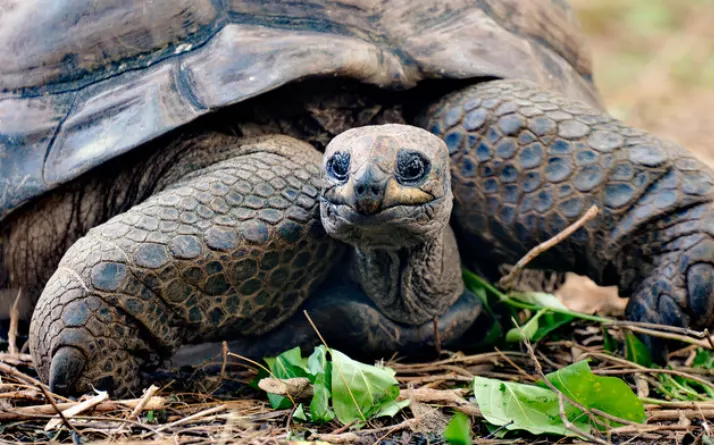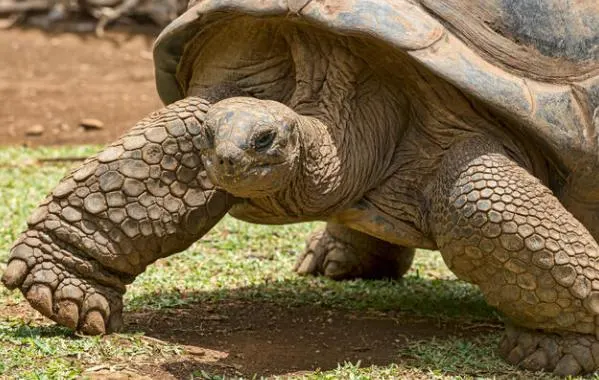The Aldabra Giant Tortoise, scientifically known as Geochelone gigantea, is a remarkable creature with an ancient lineage and fascinating traits. This species, native to the Aldabra Atoll in the Indian Ocean, is a symbol of endurance and resilience in the animal kingdom. With a lifespan that can exceed two centuries, these tortoises have witnessed generations of environmental changes and human impacts. Here, we delve into the captivating world of the Aldabra Giant Tortoise, exploring its classification, habitat, physical characteristics, behavior, reproduction, diet, threats, and conservation status.
Table of Contents
Classification and Evolution
The Aldabra Giant Tortoise is the only surviving member of the genus Aldabrachelys. This species is one of the largest land tortoises and is closely related to other extinct species that once inhabited the Indian Ocean islands, such as the Seychelles Giant Tortoise. The ongoing debate regarding their classification highlights the intricate evolutionary history of these magnificent reptiles.

Habitat and Distribution
Aldabra Giant Tortoises are endemic to the Aldabra Atoll, a coral island group part of the Seychelles. They thrive in diverse habitats within the atoll, including grasslands, mangrove swamps, and rocky regions. These tortoises are well-adapted to their environment, with a preference for areas rich in low-lying vegetation. During periods of
Physical Characteristics
Aldabra Giant Tortoises are renowned for their impressive size and distinctive appearance. Males can grow up to 1.1 meters in length and weigh between 150kg and 250kg, while females are slightly smaller. Their most notable feature is the high-domed carapace, which offers protection and contributes to their iconic look. Their long necks enable them to reach vegetation higher off the ground, an adaptation that aids in their survival. Their sturdy, shovel-like feet are designed for traversing the sandy and sometimes challenging terrain of their habitat.
Behavior and Lifestyle
These tortoises exhibit both solitary and social behaviors. They often form herds in grassy fields, particularly during foraging in the cooler morning hours. Despite their slow pace, Aldabra Giant Tortoises are quite mobile within their environment. They have been observed digging burrows to escape the heat and resting in shallow water to cool down. Interestingly, they show little fear of humans, a trait that historically made them easy targets for hunters.
Reproduction and Life Cycle
Reproduction in Aldabra Giant Tortoises is a slow process, reflecting their overall life strategy. Females lay around 25 rubbery eggs in shallow nests during the breeding season, which spans from February to May. The eggs undergo an eight-month incubation period before hatching, usually coinciding with the onset of the rainy season. Hatchlings are vulnerable and face significant predation risks, but those that survive grow slowly, reaching sexual maturity between 20 and 30 years of age. While their maximum lifespan can reach an extraordinary 255 years, most live between 80 and 120 years.
Diet and Feeding Habits
As herbivores, Aldabra Giant Tortoises spend much of their time grazing on a variety of vegetation. Their diet includes over 20 types of grasses and herbs, as well as leaves, fruits, berries, and nuts. They can often be seen reaching up on their hind legs to access higher foliage. The introduction of domestic animals, such as goats, has created competition for these
Threats and Conservation
The Aldabra Giant Tortoise faces several threats, primarily habitat loss and climate change. Historically, hunting by humans decimated their populations, and introduced species like dogs and goats continue to pose significant risks. Rising sea levels due to climate change present a looming threat to their low-lying island habitats. Despite these challenges, conservation efforts have been relatively successful. The Aldabra Atoll is now a protected World Heritage Site, home to a stable population of around 152,000 tortoises. Additional conservation programs in places like Zanzibar and Mauritius aim to bolster their numbers through captive breeding and habitat protection.
Interesting Facts
- One Aldabra Giant Tortoise is known to have lived for 255 years, making it one of the longest-living animals on record.
- These tortoises have had four scientific names, reflecting the ongoing debates about their classification.
- Climate change, particularly rising sea levels, poses a significant threat to their existence, given their habitats are only a few meters above sea level.
Relationship with Humans
Historically, the relationship between humans and Aldabra Giant Tortoises has been fraught with challenges. Early settlers hunted them extensively, leading to dramatic population declines. The introduction of domestic animals further threatened their survival. Today, while their natural habitats are protected, the tortoises face new challenges from human-induced climate change. Nonetheless, conservation efforts have helped stabilize their populations, offering a glimmer of hope for their future.

Seven Fascinating Facts About Aldabra Giant Tortoises
- Incredible Lifespan: Aldabra Giant Tortoises are among the longest-living animals on Earth. One documented individual lived for an astonishing 255 years, making them true longevity champions.
- Ancient Lineage: These tortoises belong to an ancient lineage that has survived for millions of years. They are the last remaining species of giant tortoises from the Indian Ocean, with their closest relatives having gone extinct centuries ago.
- Dietary Flexibility: While primarily herbivorous, Aldabra Giant Tortoises have been observed consuming carrion. This dietary flexibility allows them to survive in environments where plant-based
food might be scarce. - Unique Neck Adaptation: Their long necks are not just for show. This adaptation allows them to reach leaves and branches up to one meter off the ground, enabling them to access
food sources that other ground-dwelling animals cannot. - Burrowing Behavior: To escape the intense heat of their island habitat, Aldabra Giant Tortoises dig burrows in the sand. These burrows provide a cool refuge during the hottest parts of the day, showcasing their behavioral adaptability.
- Communication Skills: Aldabra Giant Tortoises communicate with each other through a series of grunts and hisses. These sounds help them establish dominance, attract mates, and signal distress, indicating a surprisingly complex social structure.
- High Reproductive Output: Despite their slow growth and late sexual maturity, female Aldabra Giant Tortoises can lay multiple clutches of eggs in a year, with each clutch containing up to 25 eggs. This high reproductive output helps ensure the survival of the species despite high predation rates on eggs and hatchlings.
To sum up, the Aldabra Giant Tortoise is a testament to the resilience of nature. Despite facing significant threats from human activity and environmental changes, these ancient reptiles continue to thrive in their protected habitats. Their long lifespan and unique adaptations make them a subject of fascination and a symbol of the need for ongoing conservation efforts. By protecting the Aldabra Giant Tortoise, we not only preserve a remarkable species but also contribute to the health and diversity of our planet’s ecosystems.
- Enchi Ball Python: A Unique and Stunning Morph of Python regius - March 27, 2025
- Emerald Tree Monitor: The Enigmatic Green Guardian of the Rainforest - March 26, 2025
- The Egyptian Cobra (Naja haje): A Fascinating Serpent - March 25, 2025
